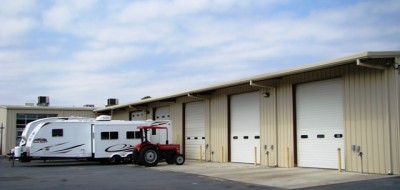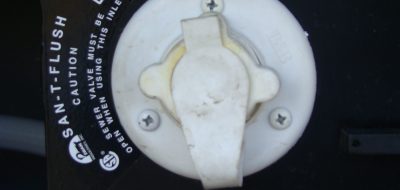
Okay, your pop-up, travel trailer or 5th wheel trailer has been sitting in storage for most of the winter, and now it’s time to start camping again. Considering that you have the proper hitch work, hitch adjustments and brake controller do you:
A) Hook it up and head down the road
B) Consider what preventive maintenance and routine maintenance might be required on the trailer before you take it camping.
Hopefully your answer was B.
It’s common for RV batteries to discharge; tires to be dangerously low on air and the trailer plug contacts to get dirty and corroded while the trailer sits in storage. If the trailer brakes don’t work properly because of a bad contact in the plug, or a tire fails it puts you and others in harm’s way.
In addition to performing preventive maintenance prior to the first camping trip of the year it’s important that you perform routine maintenance on the trailer too. This includes but is not limited to a 3,000 mile, or annual inspection of the trailer brake and bearing components.
Note: If you don’t feel comfortable performing this type of maintenance you should have an authorized RV service center do it for you. They have the proper equipment and knowledge to perform the required maintenance.
If you decide to tackle the job yourself there are several safety precautions that need to be followed before removing any tires or wheels to inspect and/or work on the trailer. The trailer must be parked on a hard flat level surface. The tires on the opposite side that you plan to work on must be chocked to prevent any possible movement forward or backward. The trailer must be jacked up according to manufacturer instructions with a proper sized jack and properly rated jack stands installed in the correct locations to support the trailer’s weight while the work is being performed. You can find some of this information in the trailer and axle manufacturer owner manuals.
Whether you do the work, or have somebody else do it the inspection should include the following items:
Brake Linings: Inspect the brake linings for wear and contamination that may affect the operation of the brakes. It’s not uncommon to see grease and other contaminants on the brake linings. As brake linings wear and/or are contaminated the braking force diminishes.
Brake Drums: Inspect the brake drums for wear and scoring/grooves that may affect the operation of the brakes and can damage the brake linings.
Springs & Hardware: Inspect the return springs and hardware for proper mounting and operation.
Brake Magnets: Inspect the magnets for wear. If excessive wear is evident (i.e., windings can be seen through the surface) the magnet needs to be replaced. Inspect the wiring for chaffing or wear and repair as required.
Brake Adjustments: As the brake linings begin to wear the brake actuating lever must travel further to apply the same braking force against the drums. Eventually the brake linings cannot effectively reach the drums and manually adjusted brakes need to be adjusted. This requires a brake adjusting tool and proper clearances from the manufacturer. It’s probably best left to the professionals.
Wheel Bearings, Races & Seals: Another common problem with trailers is the lack of wheel bearing maintenance. I’m sure you have seen boat and RV trailers sitting along the roadside in need of bearing repairs. Bearings need to be inspected for any damage and proper lubrication. Seals and bearing races need to be inspected for damage.
Battery Maintenance: Don’t forget to include routine battery maintenance too. The trailer break-away switch will not operate if the auxiliary battery is not connected or properly charged.
To help prevent these types of things from happening I am including a simple pre-trip trailer checklist you can follow to make sure your trailer is road ready.
After properly hitching the trailer (i.e. WDH adjustments, sway control, safety chains) to the vehicle make the following checks:
- Inspect the trailer plug and vehicle receptacle contacts for dirt, debris and corrosion. Clean the plug and contacts as required, ensuring a proper connection. Plug the cord in and test all trailer lights.
- Connect the trailer break-away lanyard to a secure connection on the tow vehicle.
- Test the operation of the trailer brakes. Remove any wheel chocks. Pull the trailer forward slightly and depress the brake pedal to verify the trailer brakes are engaging. Test the brake controller manual override for proper operation. If you question the operation of the trailer brakes or the brake controller adjustment have it checked by an authorized RV service center before using the trailer
- Check all tires for abnormal wear and any weather cracking/checking. If any cracks in the tire sidewalls are deeper than 1/32” or if there are signs of abnormal wear have the tire inspected by a professional before towing the trailer.
- Check and adjust tire pressure in accordance with the federal certification label on the trailer or using the tire manufacturer load and inflation tables.
- Check the condition of the battery. Check the water level in each cell and add distilled water as required. Check the battery state of charge with a multimeter or battery hydrometer. If you don’t feel comfortable working on or around lead acid battery’s have battery maintenance performed by an authorized service center.
Every 3,000 miles or annually schedule a trailer brake and wheel bearing inspection.
Happy Camping,
Mark Polk





Caravan Insurance Guy
Very interesting post.
One thing I would add is tires. Tires tend to become too old before they wear out. They deteriorate while your trailer is in storage and need to be changed regularly even if they don’t have worn out tread. Some authorities recomend every 4 years, others say up to every 7 years.
GaryM
Well, I meant Mark…
GaryM
Hey Bob,
I enjoy your blog. I have taken parts of this list, that list and created a list that works for me and my outfit. We started out not knowing much about our rig but we listened, followed your instructions and now we are like the rest of you. Our lists are typed and inserted in clear sleeves. We have the list for when we first pull the 5er out of storage. Another list for when we get ready to hit the road and so forth.
Thanks for all your good work and keep the lists coming.